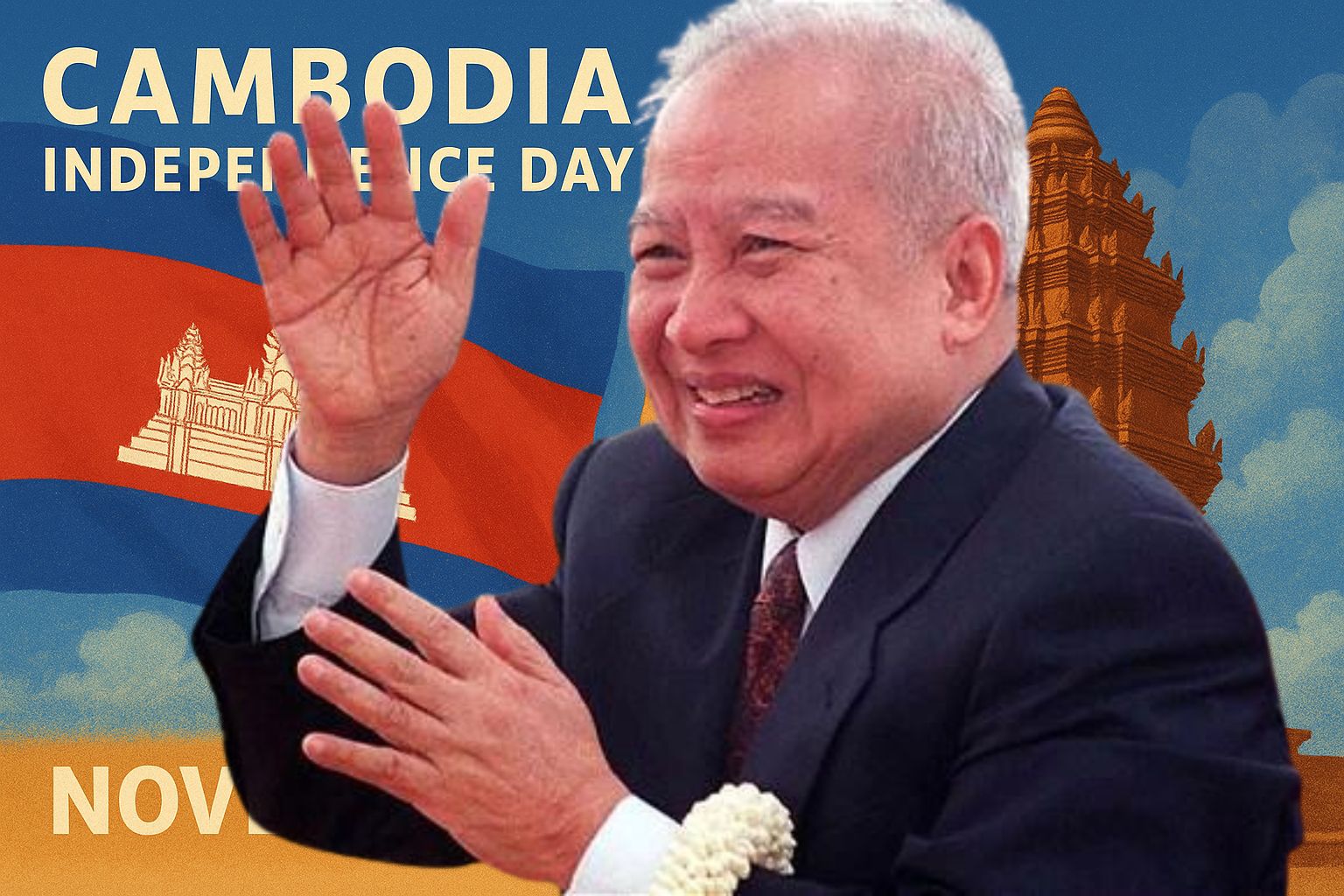Every year on November 9, the streets of Phnom Penh come alive with the colors of the Cambodian flag, the sound of patriotic songs, and the pride of a people who cherish their hard-won independence. This date marks Cambodia Independence Day, a national celebration of freedom from French colonial rule in 1953 — and a testament to the leadership of King Norodom Sihanouk, whose diplomacy and courage changed the nation’s destiny.
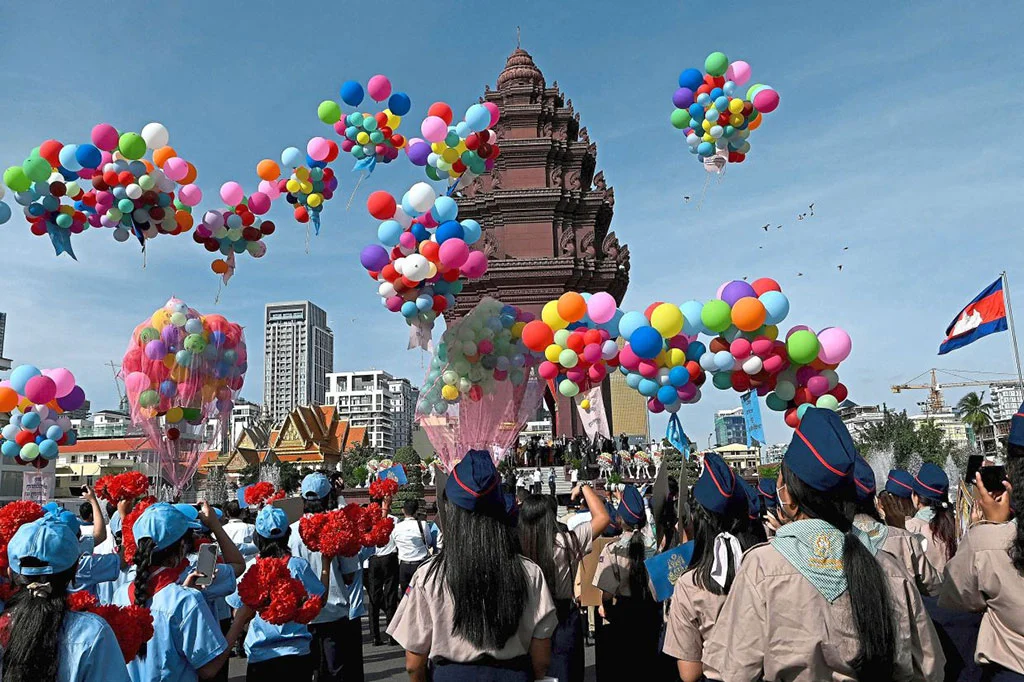
But beyond the parades and fireworks, November 9 holds deep historical, cultural, and political significance. It’s not just a day off from work — it’s a reflection of Cambodia’s resilience, unity, and national identity.
In this article, we’ll explore the full story behind Cambodia’s Independence Day: its historical roots, the journey to freedom, and the lasting legacy of that pivotal moment in 1953.
1. The Historical Context: Cambodia Under French Rule (1863–1953)
To understand the importance of November 9, we must first revisit the nearly 90 years of French colonial rule that preceded it.
The Beginning of French Protectorate
In 1863, King Norodom signed a treaty placing Cambodia under the protection of France, seeking to safeguard the kingdom from the regional powers of Siam (Thailand) and Vietnam. While this arrangement initially promised protection, it gradually evolved into direct colonial control.
Under French rule:
- Cambodia lost control over its foreign affairs.
- Economic and administrative power shifted to French authorities.
- The Khmer people faced restrictions on governance and education.
- Traditional culture and religion were often undermined by Western influences.
World War II and Shifting Power
During World War II, Cambodia was briefly occupied by Japan (1941–1945), though French administrators largely remained in charge. When Japan surrendered, the French attempted to reassert control, but nationalist movements had already gained momentum.
This era set the stage for King Norodom Sihanouk, a young monarch determined to reclaim his country’s independence.
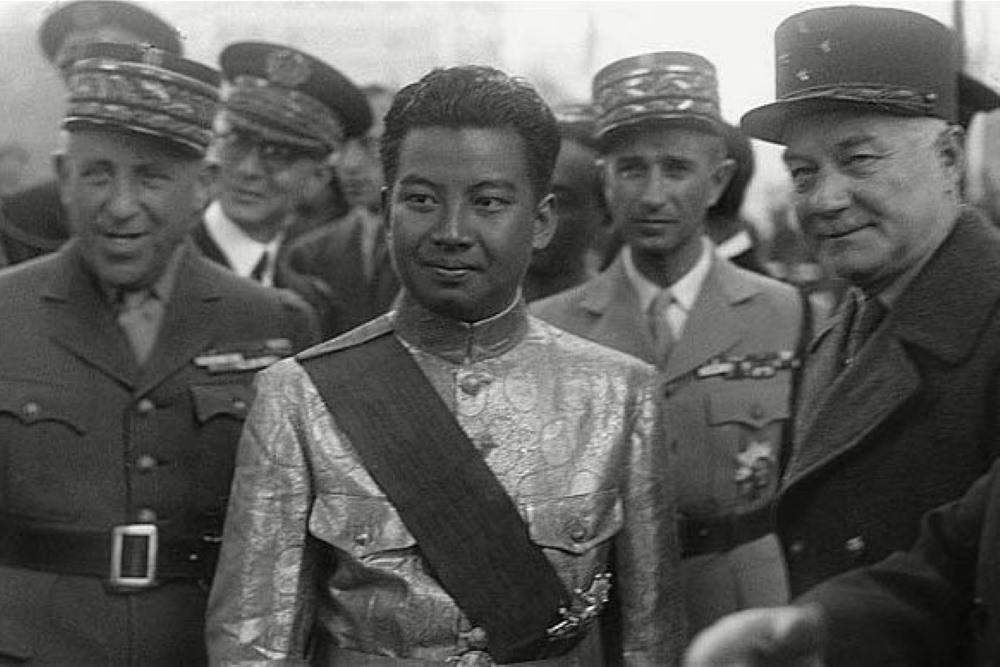
2. The Rise of Norodom Sihanouk: The Architect of Independence
A Young Monarch with Vision
Born in 1922, Norodom Sihanouk ascended to the throne in 1941 at just 18 years old. Many colonial officials believed he would be easy to influence. They were wrong.
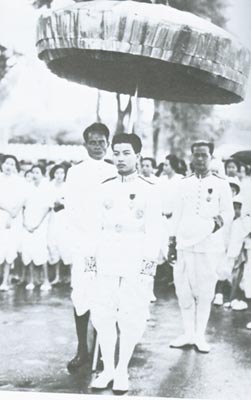
By the late 1940s, Sihanouk had become a symbol of national unity — skillfully balancing diplomacy with growing nationalist sentiment.
Diplomatic Maneuvering for Freedom
Instead of resorting to armed conflict, Sihanouk pursued a peaceful and strategic path toward independence:
- He petitioned French leaders for full sovereignty.
- He traveled internationally to gain recognition for Cambodia’s cause.
- He encouraged a spirit of nationalism among Cambodians through speeches and media.
The Royal Crusade for Independence
In 1952–1953, Sihanouk launched what became known as the “Royal Crusade for Independence.”
He left Phnom Penh for self-imposed exile in Thailand and France, where he lobbied foreign governments and the international press to pressure France into granting independence.
His efforts paid off — and in November 1953, France finally relented.
3. The Declaration of Independence: November 9, 1953
The Historic Announcement
On November 9, 1953, Cambodia officially declared its independence from France.
The announcement was made in Phnom Penh, where jubilant crowds gathered to witness King Norodom Sihanouk’s triumphant return.
Sihanouk proclaimed that Cambodia had regained “complete sovereignty” — a monumental victory achieved through diplomacy rather than war.
The Role of the Cambodian People
Independence was not solely the result of royal diplomacy; it was also the culmination of widespread patriotic movements:
- Students and intellectuals formed nationalist organizations.
- Buddhist monks advocated for moral and cultural independence.
- Rural communities supported Sihanouk’s efforts with devotion and unity.
This collective spirit continues to define Cambodia’s sense of identity today.
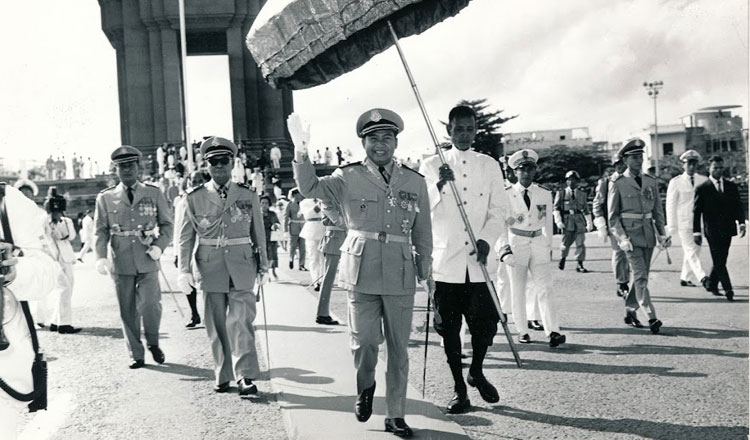
4. The First Independence Day Celebration
Phnom Penh Comes Alive
The first Independence Day celebration in 1953 was a moment of national pride.
The capital was decorated with:
- Cambodian flags fluttering across streets.
- Fireworks and processions showcasing Khmer culture.
- Traditional dances and performances symbolizing freedom.
The Independence Monument
In 1958, to commemorate the fifth anniversary of independence, the Independence Monument was constructed in Phnom Penh. Designed by the renowned Cambodian architect Vann Molyvann, it stands as a lotus-shaped structure inspired by Angkorian architecture.
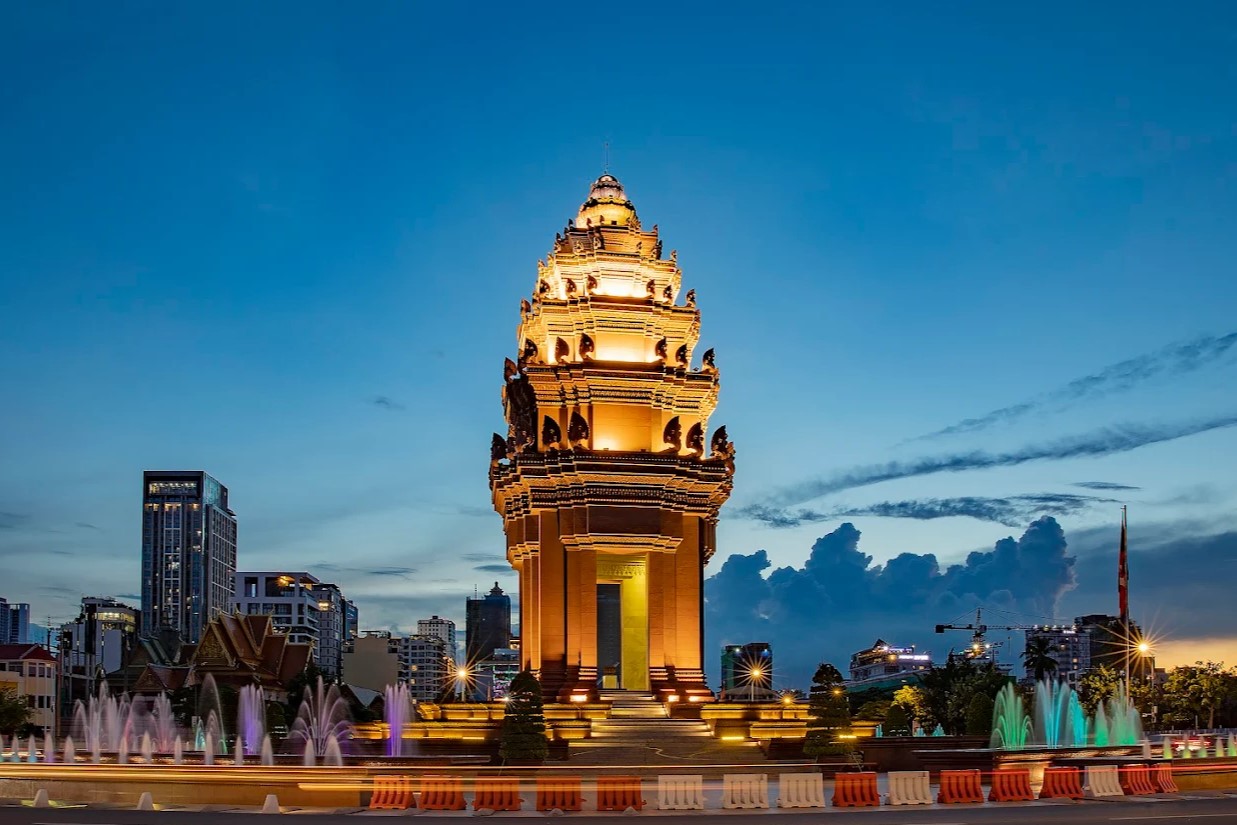
Each year on November 9, this monument becomes the centerpiece of national celebrations, with:
- Ceremonies led by the King and Prime Minister.
- Wreath-laying in honor of independence heroes.
- Military parades, cultural performances, and fireworks.
5. Cambodia After Independence: The Birth of a New Nation
Sihanouk’s Vision for Modern Cambodia
Following independence, Sihanouk abdicated the throne in 1955 to enter politics, forming the Sangkum Reastr Niyum movement (People’s Socialist Community).
He aimed to modernize Cambodia through:
- Education reform
- Infrastructure development
- Cultural revival
- Non-alignment foreign policy
Under his leadership, Cambodia became a neutral nation during the Cold War — maintaining friendly relations with both Western and communist countries.
Challenges of a Young Nation
However, independence also brought challenges:
- Economic dependency on foreign aid.
- Political divisions and rural inequality.
- The emerging threat of regional conflicts (especially the Vietnam War).
Despite these difficulties, the 1950s and early 1960s are often remembered as a golden age for Cambodia — marked by optimism, cultural revival, and artistic excellence.
6. How Cambodia Celebrates Independence Day Today
Official Ceremonies
Each year, November 9 begins with a formal ceremony at the Independence Monument in Phnom Penh.
Key events include:
- A flag-raising ceremony attended by the King, Prime Minister, and government officials.
- Floral tributes to national heroes.
- A 21-gun salute by the Cambodian military.
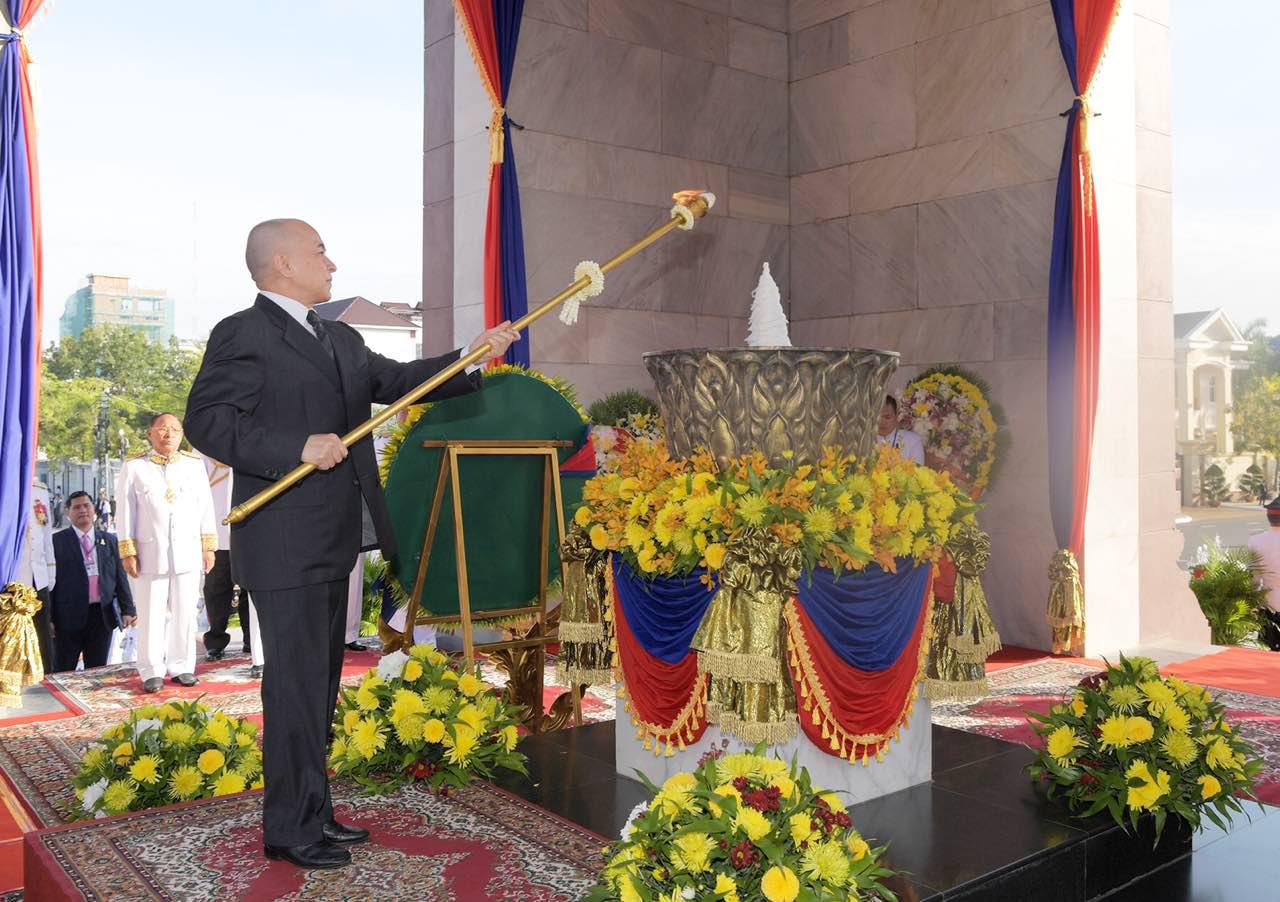
Festivities Nationwide
Beyond the capital, Independence Day is celebrated across the country:
- Parades in provincial towns.
- Cultural performances, including Apsara dance and traditional music.
- Fireworks displays lighting up the night sky.
Schools and communities often hold patriotic events to educate younger generations about the importance of independence.
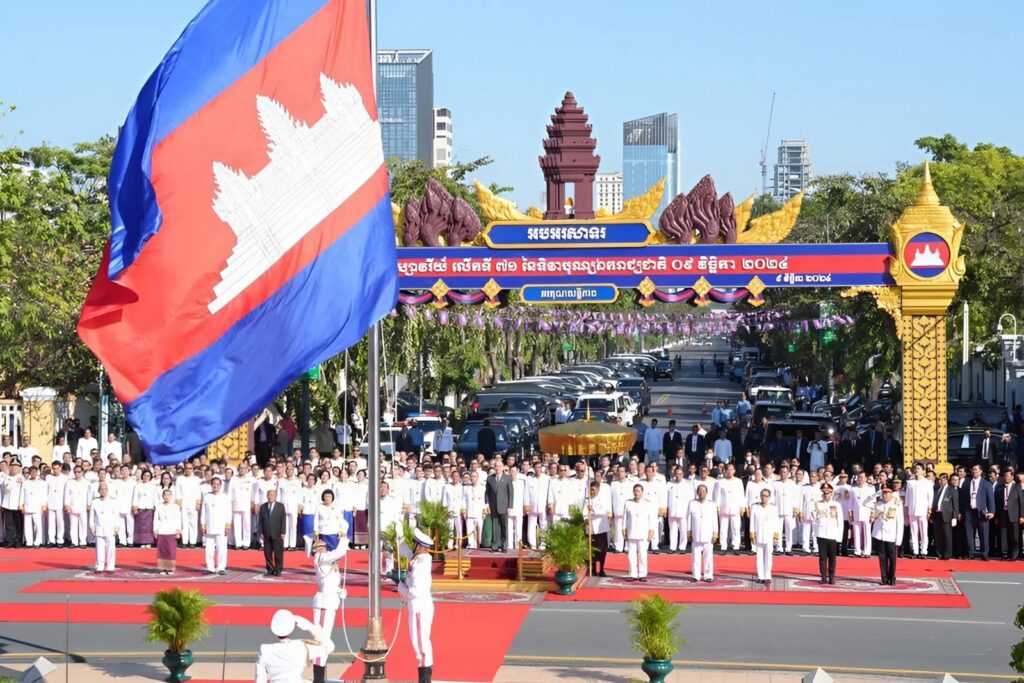
Symbolism of the Day
Independence Day embodies:
- Freedom and sovereignty
- National pride
- Respect for King Norodom Sihanouk’s legacy
- The unity of the Cambodian people
7. Norodom Sihanouk’s Lasting Legacy
The Father of Independence
Even decades after his passing in 2012, King Norodom Sihanouk remains revered as the Father of Cambodia’s Independence.
His portrait continues to adorn public spaces, schools, and homes throughout the country.
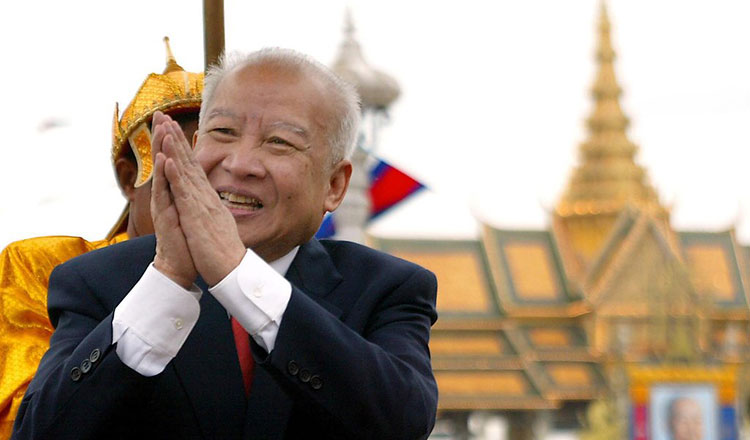
A Symbol of National Identity
Sihanouk’s leadership went beyond politics — he embodied the spirit of Cambodia:
- A protector of culture and Buddhism
- A mediator between East and West
- A visionary who placed national unity above personal ambition
His diplomatic success inspired future generations to value peaceful negotiation and resilience over conflict.
8. Why Cambodia Independence Day Matters Today
A Reminder of Resilience
In a rapidly changing world, Cambodia’s Independence Day serves as a reminder that freedom must be preserved and cherished.
It highlights how determination and unity can achieve what once seemed impossible.
A Lesson for Future Generations
For young Cambodians, November 9 is more than a historical date — it’s a call to action:
- To protect the nation’s sovereignty
- To honor the sacrifices of their ancestors
- To build a brighter, self-reliant future
A Celebration Beyond Borders
Cambodian communities worldwide also celebrate this day, organizing:
- Cultural festivals
- Patriotic concerts
- Educational programs promoting national history
It’s a day when Cambodians everywhere reconnect with their roots and reaffirm their love for the homeland.

9. Interesting Facts About Cambodia Independence Day
- Cambodia gained independence without a single battle, thanks to Sihanouk’s diplomacy.
- The Independence Monument doubles as a memorial for Cambodians who died in subsequent wars.
- The official flag used today was reintroduced after the restoration of the monarchy in 1993.
- November 9 is also celebrated as Constitution Day in some years when political reforms coincide.
- The Royal Crusade Route followed by Sihanouk during his campaign for independence has become a historical pilgrimage trail.
10. The Spirit of November 9: Unity, Pride, and Peace
As the Cambodian flag rises high on November 9, its three colors — blue, red, and white — tell the story of a nation reborn.
- Blue stands for royalty.
- Red represents bravery.
- White symbolizes purity and religion.
Together, they reflect the core values that guided Cambodia’s journey to freedom.
Independence Day isn’t just a celebration of the past — it’s a promise to the future.
A reminder that through unity and pride, Cambodia can continue to rise, just as it did in 1953.
Conclusion: Honoring the Legacy of Freedom
Cambodia Independence Day is more than a historical milestone — it’s the heartbeat of the nation.
It reminds every Cambodian that freedom, peace, and unity are priceless treasures earned through courage and wisdom.
As fireworks light up Phnom Penh and the royal anthem echoes through the night, the spirit of King Norodom Sihanouk and the determination of the Cambodian people continue to shine bright — inspiring generations to protect the independence that defines who they are.

